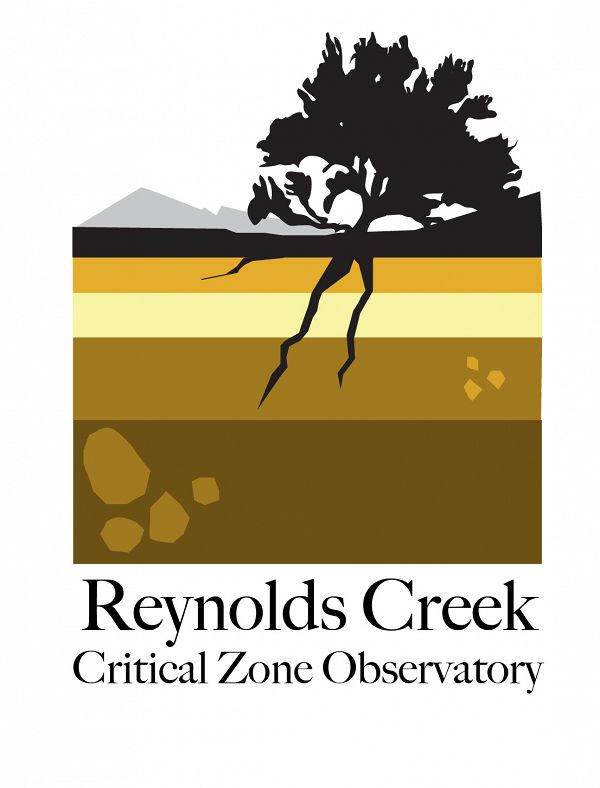Summary & Purpose
Pedotransfer functions (PTFs) have been developed to estimate soil bulk density (BDFF) using the relationships with soil organic carbon content (SOC) and particle size distribution. Current PTF’s implicitly assume that coarse fraction (CF) content and lithology do not influence BDFF. In this study, we examine the influence of CF content and lithology on BDFF estimates by developing PTF’s for total bulk density (BDT), which includes both fine and coarse fragments, using measured SOC in soils derived from felsic and mafic lithologies (148 felsic and 64 mafic, 212 total). Our results show that SOC is highly correlated with BDT in soils derived from felsic (r2 value of 0.79, p2 value of 0.84, p 2 mm), and we adjust BDT with soil pedon CF content to determine fine fraction bulk densities (BDFF-CFadj). A validation subset of 70 samples was used to compare our model against 23 published PTFs. When BDT is corrected for CF, which is highly variable vertically and horizontally within the watershed, we observe substantial improvements (average of 10.05 ± 4.89 %) in BDFF-CFadj estimation and associated errors compared to other PTFs. Findings from our study demonstrate that incorporation of CF and lithology into BDFF estimations can substantially improve BDFF and consequently soil carbon stock estimates.
Date of Publication or Submission
1-10-2018
DOI
https://doi.org/10.18122/B22M6Q
Funding Citation
This study was conducted in collaboration and cooperation with the USDA Agriculture Research Service, Northwest Watershed Research Center, Boise, Idaho, and landowners within the Reynolds Creek Critical Zone Observatory (RC CZO). Support for this research was provided by NSF for RC CZO Cooperative agreement NSF EAR-1331872. Data are available at the criticalzone.org data portal. Every sample at RC CZO is registered with an International Geo Sample Number through System for Earth Sample Registration (SESAR). Gordon Gulch data collection was funded by the Keck Geology Consortium, the National Science Foundation (NSF EAR-1062720), University of Connecticut Research Foundation, and NSF Boulder Creek Critical Zone Observatory (NSF EAR-072496). The authors declare no financial conflicts.
Single Dataset or Series?
Single Dataset
Time Period
June 2010-June 2015
Privacy and Confidentiality Statement
Boise State is explicitly compliant with federal and state laws surrounding data privacy including the protection of personal financial information through the Gramm-Leach-Bliley Act, personal medical information through HIPAA, HITECH and other regulations. All human subject data (e.g., surveys) has been collected and managed only by personnel with adequate human subject protection certification.
Use Restrictions
1. Use our data freely. Critical Zone Observatory Data Products are released to the public and may be freely copied, distributed, edited, remixed, and built upon under the condition that you give acknowledgment as described below.
2. Give proper acknowledgment. Publications, models and data products that make use of these datasets must include proper acknowledgement, including citing datasets in a similar way to citing a journal article (i.e. author, title, year of publication, edition or version, and URL or DOI access information. See http://www.datacite.org/whycitedata).
3. Let us know how you will use the data. The dataset creators would appreciate hearing of any plans to use the dataset. Consider consultation or collaboration with dataset creators.
Disclaimer of Warranty
BOISE STATE UNIVERSITY MAKES NO REPRESENTATIONS ABOUT THE SUITABILITY OF THE INFORMATION CONTAINED IN OR PROVIDED AS PART OF THE SYSTEM FOR ANY PURPOSE. ALL SUCH INFORMATION IS PROVIDED "AS IS" WITHOUT WARRANTY OF ANY KIND. BOISE STATE UNIVERSITY HEREBY DISCLAIMS ALL WARRANTIES AND CONDITIONS WITH REGARD TO THIS INFORMATION, INCLUDING ALL WARRANTIES AND CONDITIONS OF MERCHANTABILITY, WHETHER EXPRESS, IMPLIED OR STATUTORY, FITNESS FOR A PARTICULAR PURPOSE, TITLE AND NON-INFRINGEMENT. IN NO EVENT SHALL BOISE STATE UNIVERSITY BE LIABLE FOR ANY SPECIAL, INDIRECT OR CONSEQUENTIAL DAMAGES OR ANY DAMAGES WHATSOEVER RESULTING FROM LOSS OF USE, DATA OR PROFITS, WHETHER IN AN ACTION OF CONTRACT, NEGLIGENCE OR OTHER TORTIOUS ACTION, ARISING OUT OF OR IN CONNECTION WITH THE USE OR PERFORMANCE OF INFORMATION AVAILABLE FROM THE SYSTEM. THE INFORMATION PROVIDED BY THE SYSTEM COULD INCLUDE TECHNICAL INACCURACIES OR TYPOGRAPHICAL ERRORS. CHANGES ARE PERIODICALLY ADDED TO THE INFORMATION HEREIN. COMPANY AND/OR ITS RESPECTIVE SUPPLIERS MAY MAKE IMPROVEMENTS AND/OR CHANGES IN THE PRODUCT(S) AND/OR THE PROGRAM(S) DESCRIBED HEREIN AT ANY TIME, WITH OR WITHOUT NOTICE TO YOU. BOISE STATE UNIVERSITY DOES NOT MAKE ANY ASSURANCES WITH REGARD TO THE ACCURACY OF THE RESULTS OR OUTPUT THAT DERIVES FROM USE OF THE SYSTEM.
Recommended Citation
Patton, Nicholas R.; Lohse, Kathleen A.; Seyfried, M.S.; Will, Ryan M.; and Benner, Shawn. (2018). Dataset for Lithology and Coarse Fraction Adjusted Bulk Density Estimates for Determining Total Organic Carbon Stocks in Dryland Soils [Data set]. Retrieved from https://doi.org/10.18122/B22M6Q



Comments
Title changed from Dataset for Coarse Fraction Adjusted Bulk Density Estimates for Dryland Soils Derived from Felsic and Mafic Parent Materials to Dataset for Lithology and Coarse Fraction Adjusted Bulk Density Estimates for Determining Total Organic Carbon Stocks in Dryland Soils on June 6, 2018.